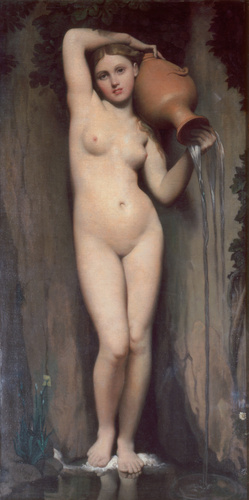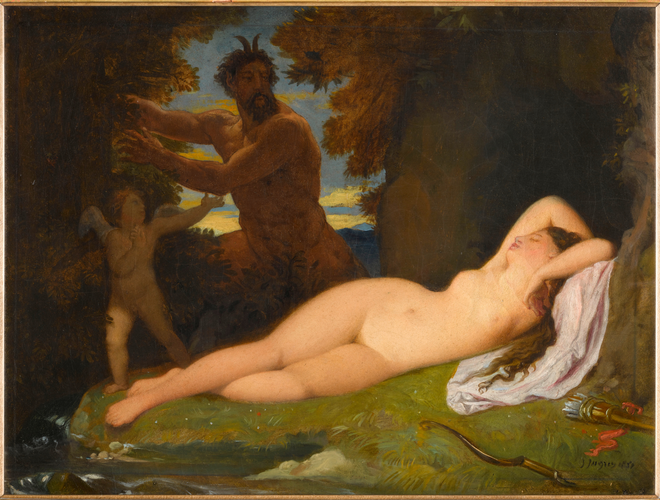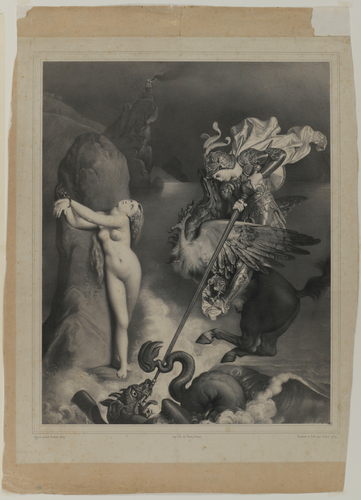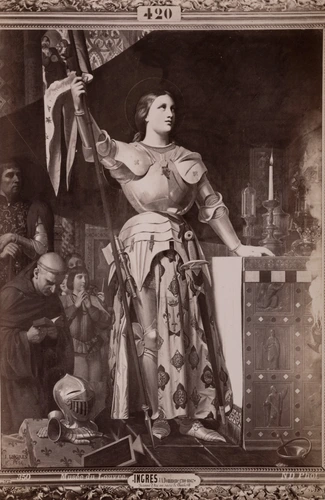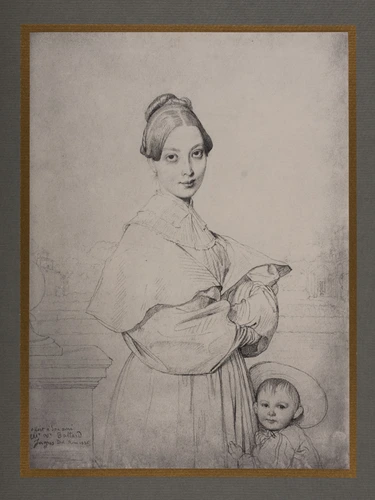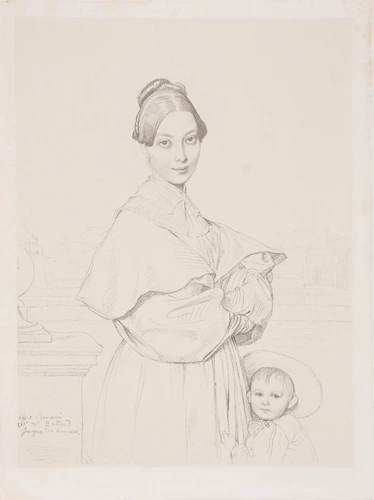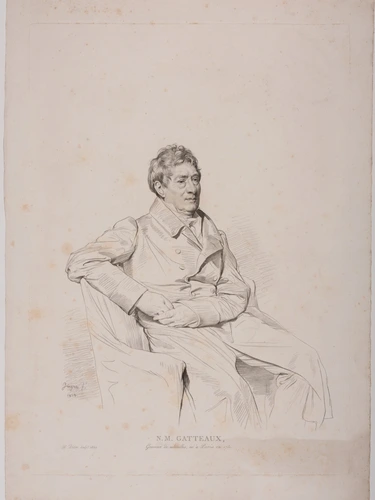Vénus à Paphos
As the title indicates, this painting represents Venus, the Roman goddess of love and fertility. In the background, behind the abundant greenery painted by Alexandre Desgoffe, Ingres' pupil and collaborator, stands a classical temple. This detail – as well as the presence of a Cupid – is an unequivocal indication that the nude woman in the foreground is indeed Venus. However, in one of his notebooks, Ingres wrote "Sketch for a Venus, portrait-painting", and underlined the word "portrait" to emphasise the genre of the work. This does not therefore come down to a straightforward mythological painting. Besides, this Venus, with specific physical features accentuating her oval face and large blue-grey eyes, bears little resemblance to the stereotypical gods and goddesses that Ingres usually liked to draw.
We know the identity of the model: it was Mrs Antonie Balaÿ (1833-1901), daughter of a wealthy member of parliament. We do not know, however, how Ingres came to associate the naked body of Venus with the recognisable features of a woman from high society. Maybe it was a commission that was cancelled when the portrait had already been started, the artist then deciding to change his painting into a mythological scene. However, it is difficult to imagine that he did not have the consent of the model beforehand.
As usual, Ingres here puts together Venus' body without worrying about anatomical truthfulness with distortions that would later delight Picasso. The line of her back is much too curved, and her neck forms a strange angle with the left shoulder. This unusual body, combined with the distant gaze of Mrs Balaÿ, brings a strange eroticism to this hybrid work, somewhere between dream and reality.


